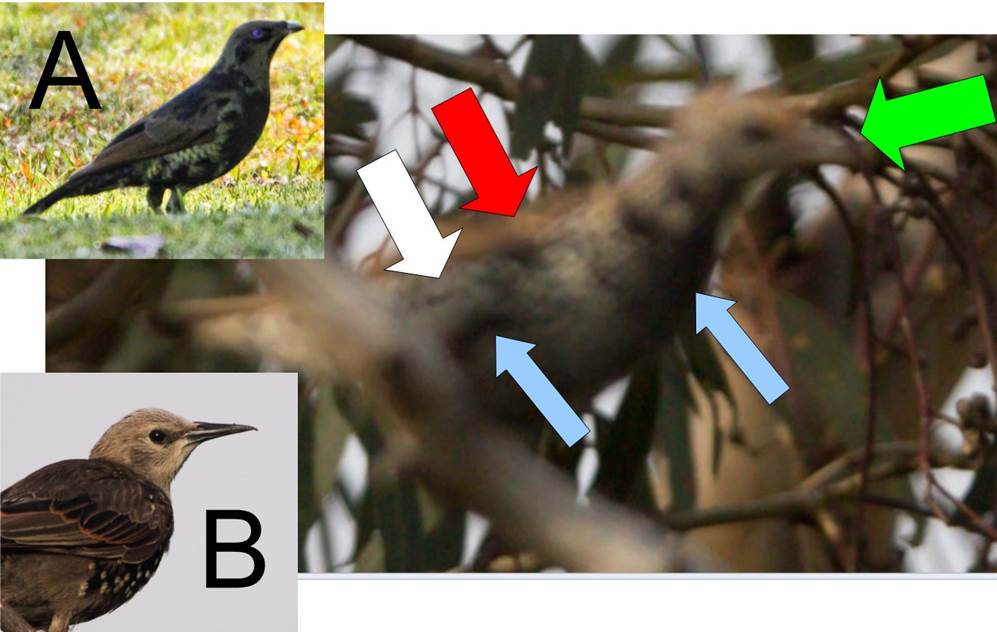And which of the apparent bands across the throat are out of focus twigs?
At the time I thought it was a starling because it was, to my reckoning, about that size. Crimson parrots had been in the same tree and were a lot bigger.
From: Geoffrey Dabb [
Sent: Tuesday, 8 April 2014 2:22 PM
To:
Subject: FW: [canberrabirds] Bird for ID please
Well, Margaret has come up with an interesting one this time. I understand that the forwarded image, reproduced below, is all we have. The question is: which of the apparent elements are significant, and which are illusory or misleading. The colour of the back (red arrow) and head is curious - it is a kind of toffee colour that does not match anything, except perhaps a juvenile koel. The shape of the bill is not distinct - it might be short and curved, provided it is not part-obscured by that twig. An important question is whether the blackish blotches (blue arrows) are part of the plumage or caused by some shadowing effect, and whether the background speckling (white arrow) is also accurately represented. Attaching weight to a short curved bill, a bowerbird seems more likely. It is possible the black could be the emergence of male adult plumage as the distribution would fit (inset A – a year 6 bird) – and also the pale bill. The black does not have the pattern of a juv starling (inset B) and the bill does not match. Neither the black nor the bill fits an oriole. On the other hand, the thin neck and small head do not fit a bowerbird, and nor does the absence of any green tones. On general colour alone a juv starling could be a contender, but that bill (shape and colour) would need to be discounted.

Dear folk,
At first I thought this distant bird was a starling, and took little notice, but then it looked somehow different. Autofocus could not cope with all the leaves around, and as I reached for the manual focus switch it flew off. Ah well, such is the lot of bird photographers.
Is it a juvenile starling? The striations/speckles seem too definite a pattern for a starling to me.
Callum Brae, 1st April 2014.
Many thanks
Margaret Leggoe

